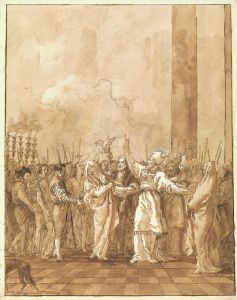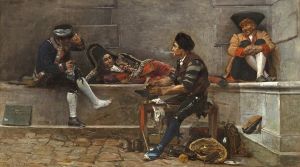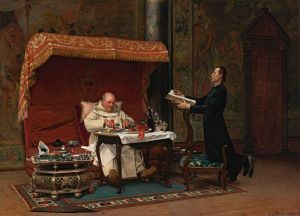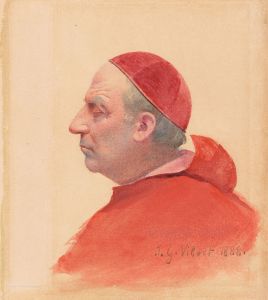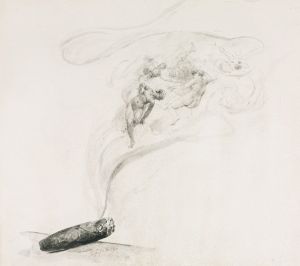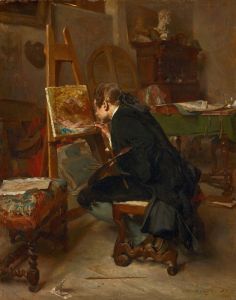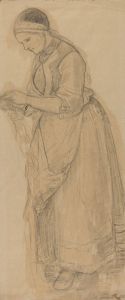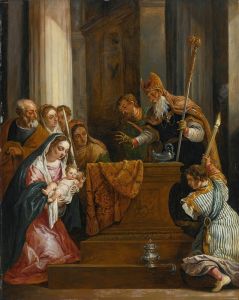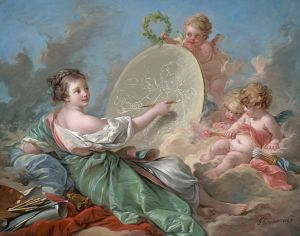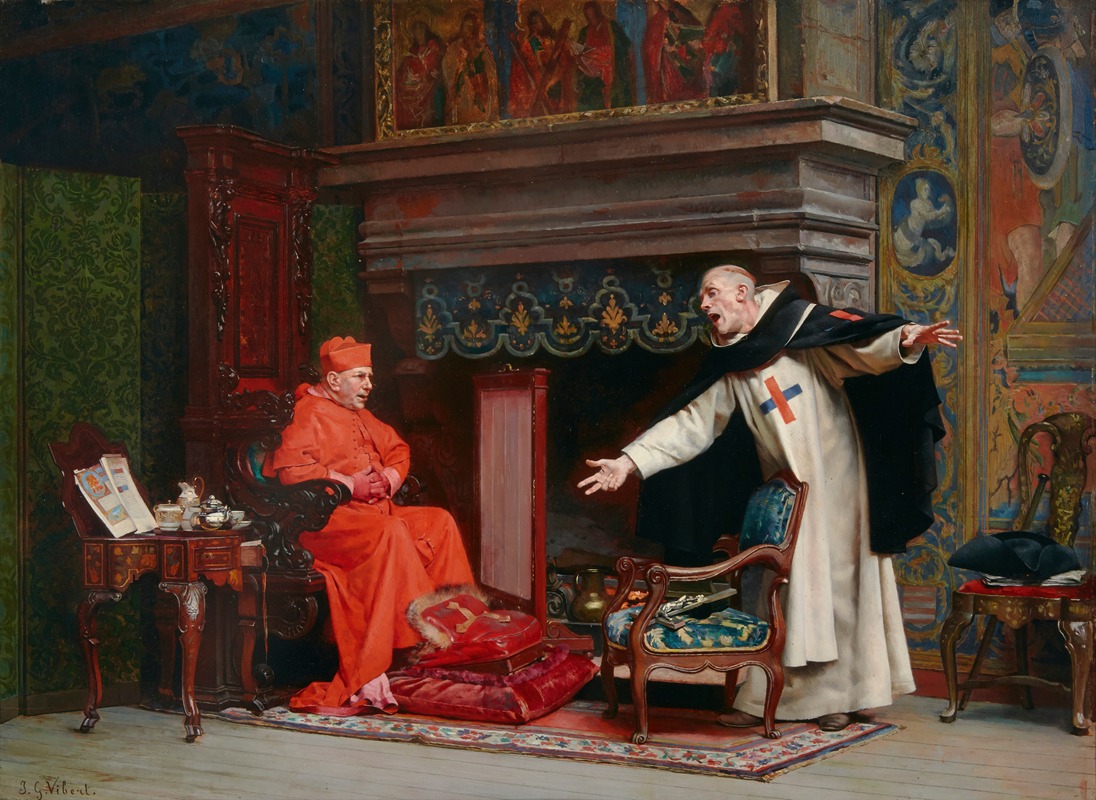
Le choix d’un prédicateur
A hand-painted replica of Jehan Georges Vibert’s masterpiece Le choix d’un prédicateur, meticulously crafted by professional artists to capture the true essence of the original. Each piece is created with museum-quality canvas and rare mineral pigments, carefully painted by experienced artists with delicate brushstrokes and rich, layered colors to perfectly recreate the texture of the original artwork. Unlike machine-printed reproductions, this hand-painted version brings the painting to life, infused with the artist’s emotions and skill in every stroke. Whether for personal collection or home decoration, it instantly elevates the artistic atmosphere of any space.
Jehan Georges Vibert was a 19th-century French academic painter known for his satirical and often humorous depictions of clergy and religious themes. One of his notable works is "Le choix d’un prédicateur" (The Choice of a Preacher). Vibert was born in Paris on September 30, 1840, and studied at the École des Beaux-Arts under the tutelage of Félix-Joseph Barrias and François-Édouard Picot. He became a prominent figure in the French art scene, particularly recognized for his genre paintings that often critiqued the Catholic Church.
"Le choix d’un prédicateur" exemplifies Vibert's characteristic style, which combines meticulous attention to detail with a narrative that often carries a satirical undertone. The painting depicts a scene involving clergy members, a common subject in Vibert's oeuvre. His works frequently explore themes of hypocrisy and the human side of religious figures, presenting them in a light that is both critical and humorous.
Vibert's paintings are known for their vibrant colors and precise brushwork, which bring his scenes to life with a sense of realism. He often employed a theatrical approach to composition, arranging his figures and settings in a way that draws the viewer into the narrative. This technique is evident in "Le choix d’un prédicateur," where the expressions and postures of the characters are carefully crafted to convey the underlying story.
Throughout his career, Vibert exhibited his works at the Paris Salon, where he gained considerable acclaim. His paintings were popular among collectors, and he received several awards for his contributions to the arts. Vibert's ability to blend humor with social commentary made his works appealing to a broad audience, and his paintings remain appreciated for their wit and technical skill.
In addition to his painting career, Vibert was also an accomplished playwright and author. He wrote several plays and books, further showcasing his talent for storytelling and his keen observation of human nature. His literary works often mirrored the themes present in his paintings, offering a satirical look at society and its institutions.
Vibert's legacy as an artist is marked by his unique ability to capture the complexities of human behavior through his art. His paintings continue to be studied and admired for their craftsmanship and their insightful commentary on the world around him. "Le choix d’un prédicateur" stands as a testament to Vibert's skill in blending narrative and visual art, creating a piece that is both engaging and thought-provoking.
Jehan Georges Vibert passed away on July 28, 1902, but his works continue to be celebrated for their artistic merit and their ability to provoke thought and discussion. His paintings, including "Le choix d’un prédicateur," remain an important part of the canon of 19th-century French art, offering a window into the social and cultural dynamics of the time.





